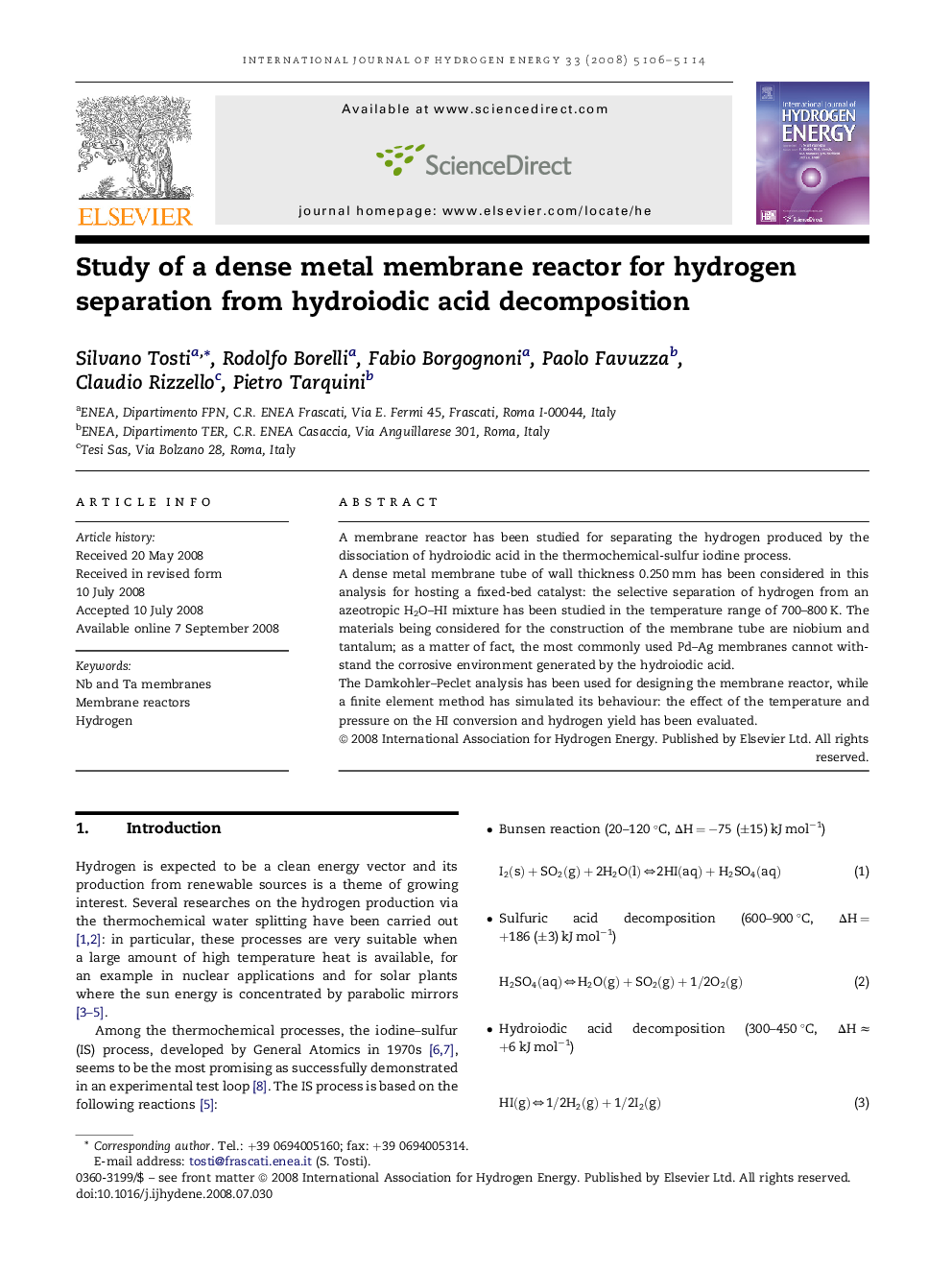| Article ID | Journal | Published Year | Pages | File Type |
|---|---|---|---|---|
| 1281423 | International Journal of Hydrogen Energy | 2008 | 9 Pages |
A membrane reactor has been studied for separating the hydrogen produced by the dissociation of hydroiodic acid in the thermochemical-sulfur iodine process.A dense metal membrane tube of wall thickness 0.250 mm has been considered in this analysis for hosting a fixed-bed catalyst: the selective separation of hydrogen from an azeotropic H2O–HI mixture has been studied in the temperature range of 700–800 K. The materials being considered for the construction of the membrane tube are niobium and tantalum; as a matter of fact, the most commonly used Pd–Ag membranes cannot withstand the corrosive environment generated by the hydroiodic acid.The Damkohler–Peclet analysis has been used for designing the membrane reactor, while a finite element method has simulated its behaviour: the effect of the temperature and pressure on the HI conversion and hydrogen yield has been evaluated.
